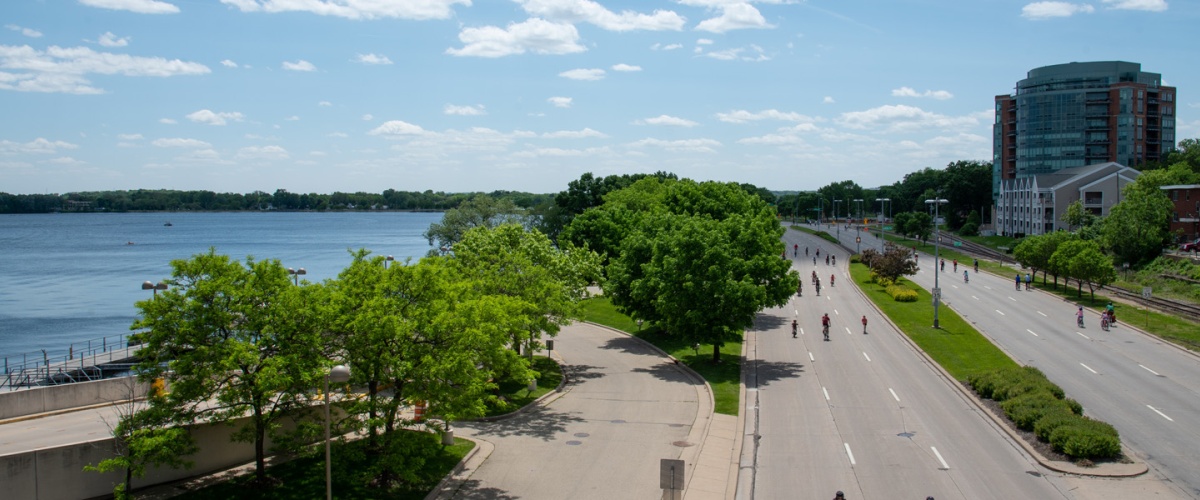Mayor Announces TRIM Program to Increase City Govt Efficiency
Archived News Release
This news release is archived and might not be accurate anymore.
Program to Ensure Quality Basic Services for Rapidly Growing Community Madison – Mayor Dave Cieslewicz today unveiled the Taxpayer Relief through Innovative Measures (TRIM) program to formally build on his past individual initiatives that have encouraged innovation and efficiency in city government. Cieslewicz said the program was a recognition that, as Madison continues to grow rapidly, increased city government innovation and efficiency will help ensure that quality basic services continue to be provided in a fiscally responsible way. According to the latest US Census report, the City of Madison added 1,402 residents in 2005 alone and 12,364 residents since 2000. “Madison is growing at a rapid pace, and serving that growth at a price that taxpayers can afford requires city government to work smarter and more efficiently than ever,” said Cieslewicz. “While we have already implemented a number of individual efficiency initiatives during my administration, the TRIM program raises that effort to a new level.” Cieslewicz made the announcement during a demonstration for the city’s new sidewalk “shaving” program, which will save taxpayers an estimated $70,000 in 2006 by shaving smooth damaged sidewalk panels that would otherwise have to be completely replaced. As an example of the type of initiatives he expects the TRIM program to produce in the future, Cieslewicz noted a number of innovations that are currently in place: - The automated recycling program, which enables city workers to serve 700 households per day, up from 450 under the old system. This innovation is projected to save taxpayers $271,000, while generating $140,000 in revenue in 2006. City residents are able to recycle more materials than before, and recycling is up about 40% under the new system. - Transfer of the Madison ice arenas to a non-profit entity, eliminating an annual City operating subsidy of $238,000 for those facilities. - Purchase of automated pothole patching vehicles that enable a single City worker to perform a job that otherwise requires four people. Estimated savings to the taxpayers: $85,230. - Merging the City and Dane County Health Departments to provide better service through a single, consolidated point of contact. - A cooperative agreement between the city and surrounding communities to provide Advanced Life Support Services. The agreement improves public safety by reducing ambulance response times, and may reduce taxpayer costs by eliminating the need for duplicative services. “It is through innovations such as these that I have been able to restrain increases in the property tax levy to below-average levels every year I’ve been in office,” said Cieslewicz. “As our community continues to grow, providing quality basic services in a fiscally responsible way will be more challenging than ever. That is why the TRIM program is so important, to ensure that citizens get the services they expect, at a price they can afford.” Upcoming TRIM program initiatives include: - Implementation in 2007 of an automated trash collection system, similar to the highly-successful automated recycling program. The system is projected to save taxpayers $125,000. - A “one-stop shop” to enable businesses and residents to easily do business with city government for activities such as obtaining building permits. - The Dept. of Planning and Development reorganization, an initiative to reshape the City’s most far-reaching organization to provide better service in a more efficient manner. The list of money-saving or customer service initiatives either enacted or under active consideration by the mayor includes: - Automated recycling. $410,000 in overall taxpayer annual savings. - Ice arena transfer. Ends an annual subsidy that hit $238,000 in 2003. - Automatic pothole patchers. Estimated taxpayer annual savings of $85,000. - City-County Health Dept. merger. Joint director now hired; currently going through the process of merging other agency functions (e.g., Information Services). - The “Report a Problem” website, which enables citizens to quickly alert city workers to issues ranging from uncollected trash to potholes. Nearly 3,200 reports have been received since the system went online in 2005. - ALS agreement. Improving public safety through faster emergency response times. Reduces need for purchase of new ambulances, which cost over $200,000 each. - Improved city vehicle management, with a new fuel system and GPS vehicle tracking, to help reduce fuel consumption and ensure efficient deployment of city vehicles. - An expansion of the reduced mowing program in city parks from 1,300 to 1,400 acres. Savings to taxpayers of over $50,000 annually, with benefits for air and water quality as well. - Chip sealing. An innovative way to extend the life of city streets at less expense to taxpayers. One mile of chip sealing costs $17,137, compared to $360,000 per mile for traditional resurfacing. Citywide implementation of the program could save an estimated $130 million over a 45-year period. - Verified response. Nearly every automated burglar alarm is false. This ordinance requires verification of an intruder prior to police dispatch. The savings in police response time is the equivalent of placing an additional three officers on the street, which would otherwise cost city taxpayers $210,000 per year in salaries and equipment. - Refinancing of retirement debt in 2003-2004. Savings to taxpayers of $8 million over the next 20 years. - Police storage of impounded vehicles. A change in this policy will result in annual savings of $40,000. - Energy efficiency investments. City government is making investments in energy efficient technologies to reduce taxpayer exposure to soaring energy costs. The mayor’s capital budget includes $100,000 per year in energy efficiency investments. - Creating the Transportation Department. The mayor directed the consolidation of Traffic Engineering and the Parking Utility into a single Transportation Department to more efficiently serve city residents by consolidating services related to vehicular traffic. Estimated savings of about $100,000.

